One of the IGB’s most successful and comprehensive public engagement events, the World of Genomics, will be showcased for three days at the St. Louis Science Center from October 18-20, 2018. The St. Louis Science Center, ranked as one of America’s most visited museums by Forbes Traveler Magazine, has long served as a destination for all ages with an interest in learning about science and technology.
The World of Genomics will feature six interactive learning stations. At these stations, a team of Illinois volunteers from dozens of scientific fields will highlight hands-on activities and interactive demonstrations that describe the deep portfolio of IGB research in easy to understand terms.
Spanning the breadth of our research in health, technology, and environment, visitors will be able to enjoy the following stops within the St. Louis Science Center:
Carl R. Woese & the Tree of Life
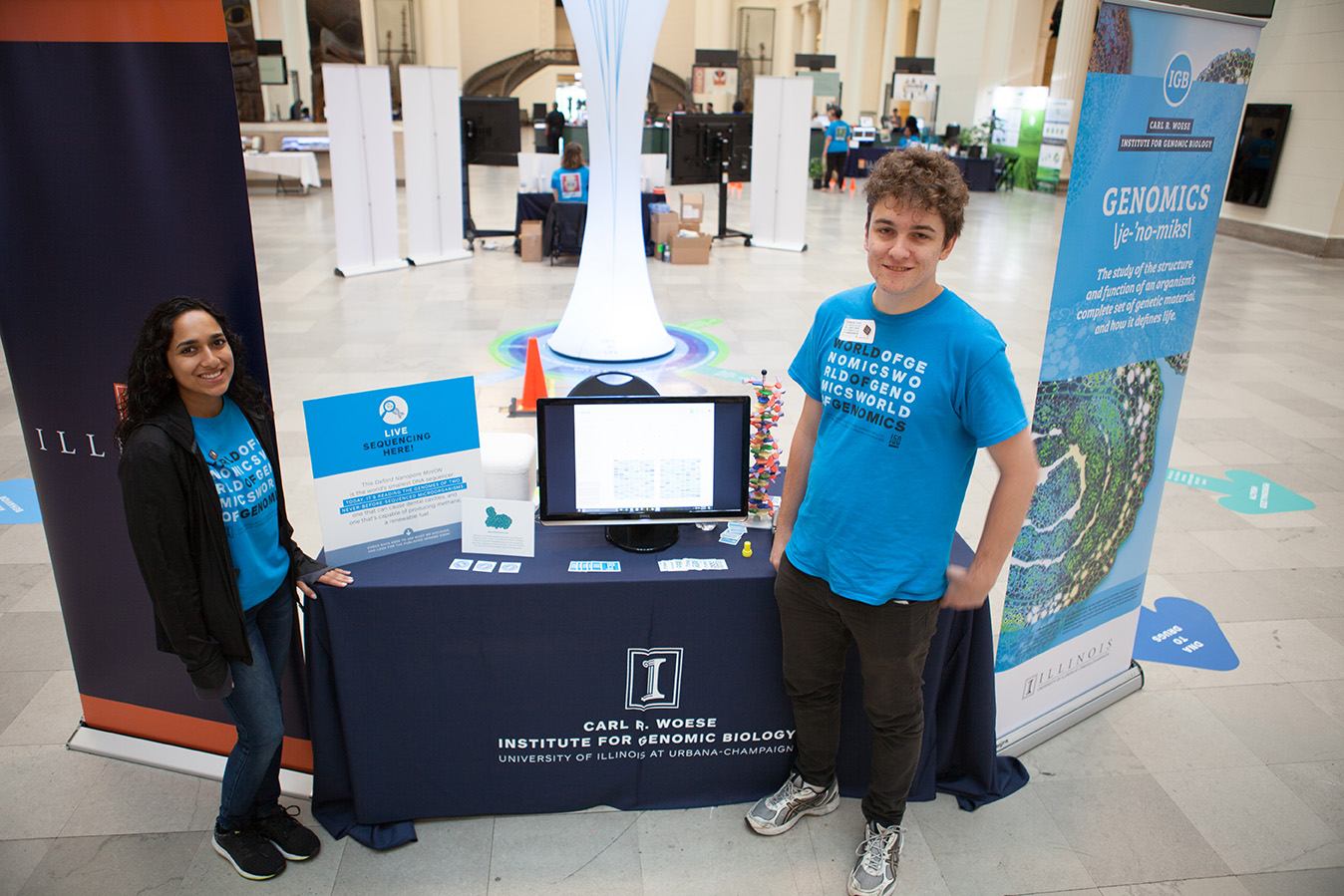
The Tree of Life is the overarching metaphor used by Darwin to describe the evolutionary relationships among all organisms, both living and extinct. Its branches represent the diversity of life; its trunk, the origin of life on Earth. Though scientists long assumed there were only two most fundamental domains of life—bacterial and eukaryotic—evidence of a third domain was found by Illinois researcher and IGB namesake Carl Woese, whose discovery was one of the most important scientific advances of the 20th century. Visitors can explore how genomic technologies have revolutionized our knowledge of the diversity of life, and observe an organism being sequenced live at the station.
Brains and Behavior
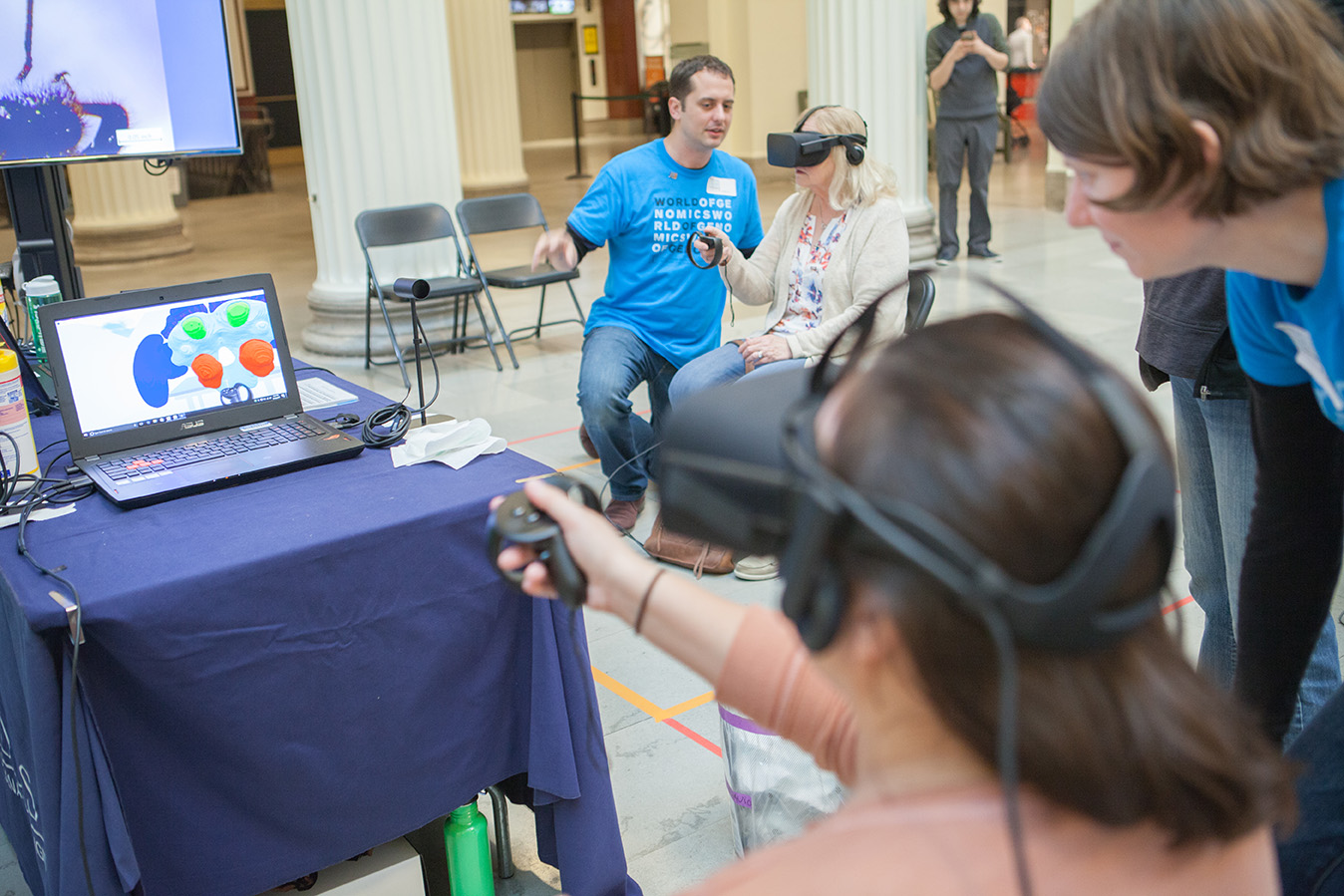
The key to understanding animal and human behavior lies in studying the brain and the genes that help to shape its activity. By identifying common behaviors and genes in animals such as honey bees, we can better understand the evolution and function of different behavioral traits throughout the animal kingdom. This station examines concepts related to the human brain and behavior through the lens of bee research, where attendees can view a live bee hive on display, and use virtual reality goggles to explore 3D models of the brain.
DNA to Drugs
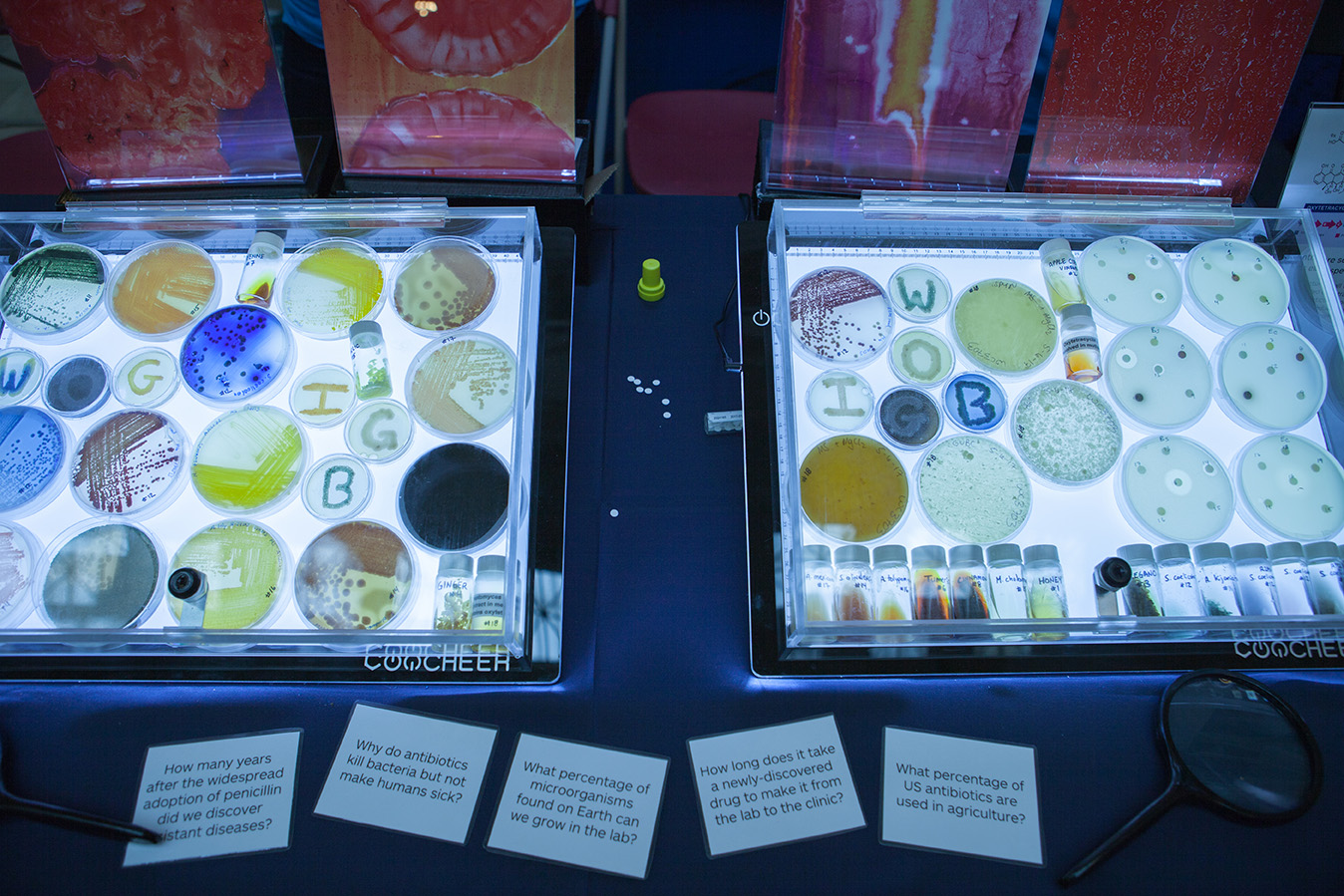
The world is in increasingly desperate need of new treatment options for resistant and deadly diseases, but traditional drug discovery methods are producing ever-diminishing returns. Genomic technologies have made it possible to screen thousands of candidates for potential new drugs and to pinpoint the exact causes of some common diseases, making them easier to understand and treat. At this station one can see how robotic devices are helping researchers perform tasks more quickly and accurately, watch antibiotics in action, and learn about the pet animals who have helped our researchers demonstrate the success of new cancer therapies.
Emergence of Life
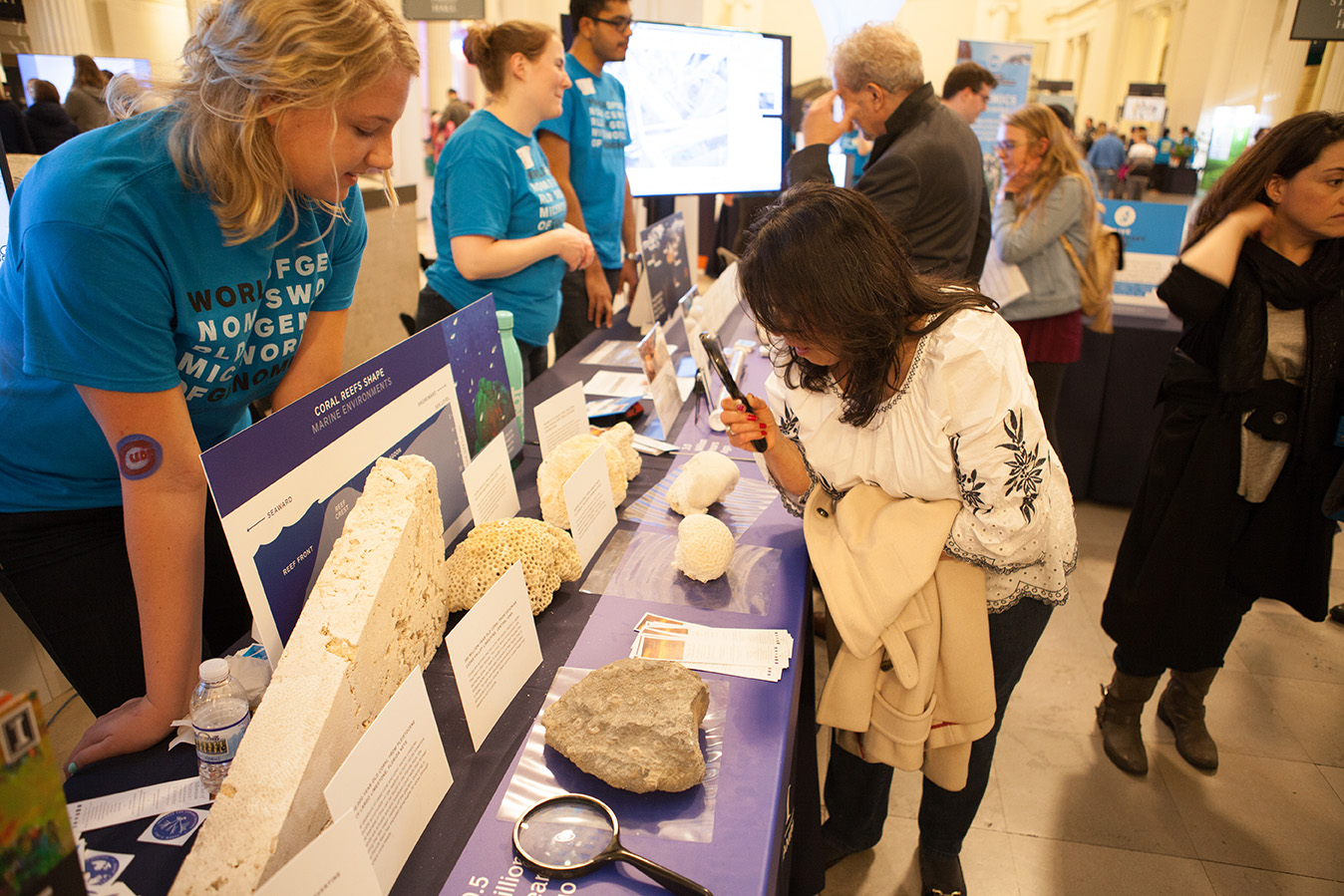
With help from the NASA Astrobiology Institute at Illinois, this station explores how life began by showcasing the evolutionary relationships among all living things on Earth, from the mysterious first self-replicating entity to the present diversity of forms. Researchers are demonstrating how fossil and skeletal evidence can teach us about more than just dinosaurs; we see lasting traces of human global migration and the legacy of past and present climate changes. This station features controllable remote instrumentation at the IGB’s Core Facilities Microscopy Suite; the resulting images of human kidney stones reveal interactions between geology and biology. These types of interactions were present during the emergence of life on Earth, play important roles in the human body today, and may even be a shared feature of life on other planets.
Food and Fuel
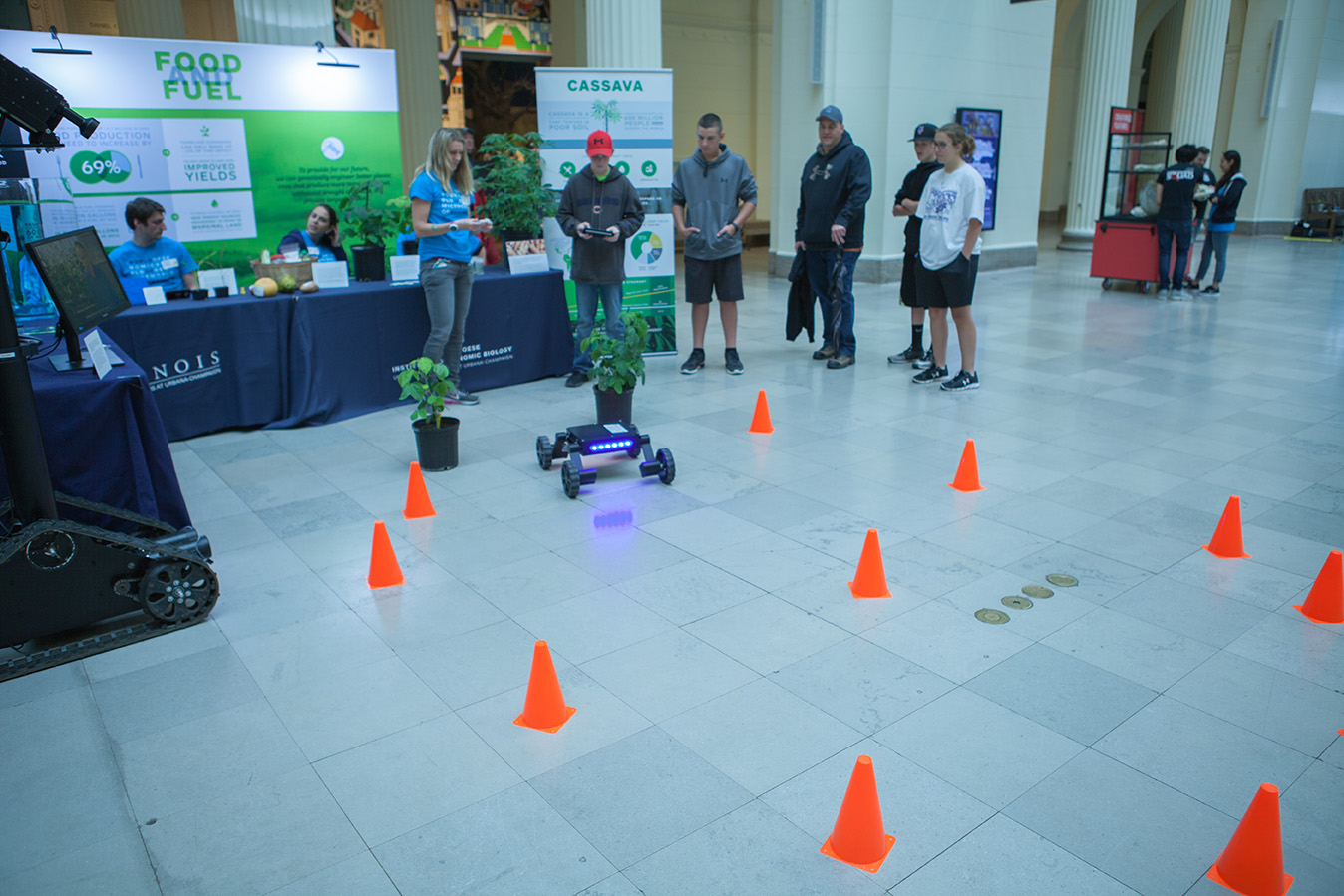
As our global population continues to increase, we need to grow more food and thus need to devote more land area to food crops. However, global climate change is limiting our useable farmland; moreover, food crops are in competition with the growing demand for biofuel crops to reduce our dependency on fossil fuels. Through a combination of traditional breeding, genetic engineering, and genome editing, we can breed plants to produce higher yields and withstand drought and disease, but also grow on land not currently usable for agriculture. Visitors here will observe our crop-roving robot and even take it for a test drive, as well as learning how researchers select the best plants for future test fields.
Personalized Health
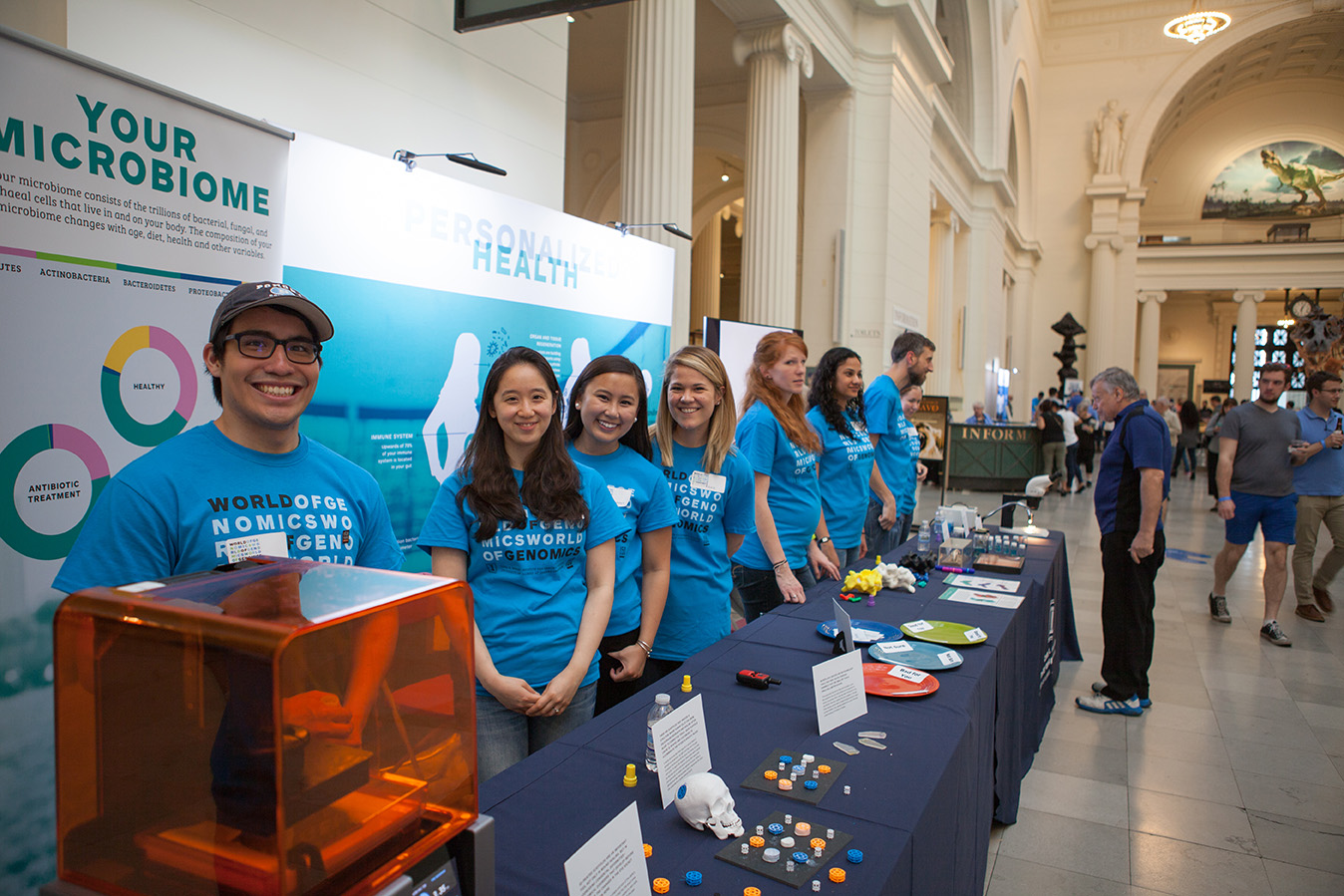
Every human body is unique, and that variation includes how we develop, what foods we can digest, and what diseases we might be susceptible to—meaning that medical problems don’t have a one-size-fits-all solution. By understanding the genomic causes for individual variation, we can create personalized treatment options for complex problems. This station features hands-on visualization of the unique microbial communities that live inside every person as well as a 3D printer creating personalized implantable medical devices.
(Photos from the World of Genomics held at The Field Museum, Chicago, Illinois)
Join us at the St. Louis Science Center in October for the World of Genomics exhibit, and enjoy the other activities found at the museum, including GROW, a one-acre outdoor exhibit on the details of our food supply; the OMNIMAX, a four-story IMAX Dome theater; the James S. McDonnell Planetarium, one of the world's largest planetariums; and the Discovery Room, an activity area for families with younger children.
The World of Genomics thanks Abbott, AbbVie, AlloSource, Bayer, Illinois Corn Marketing Board, Illumina, Intel, Mid-America Transplant, National Aeronautics and Space Administration (NASA), and Carl Zeiss Microscopy for their generous sponsorship.
